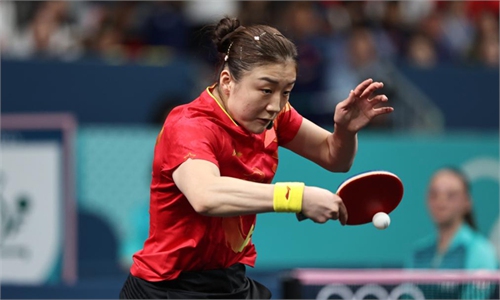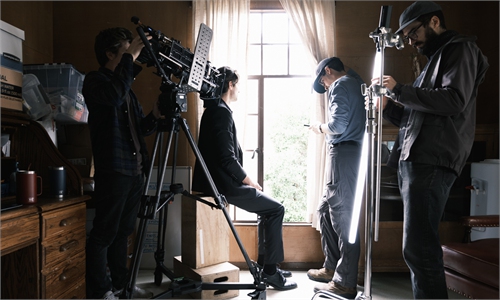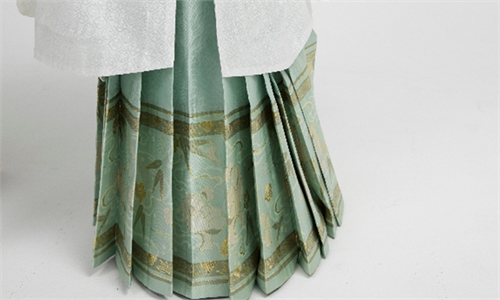ARTS / CULTURE & LEISURE
From earth to space, 7,000-year-old 'tenon and mortise' design shows world-sharing Chinese wisdom
Small part, big wisdom
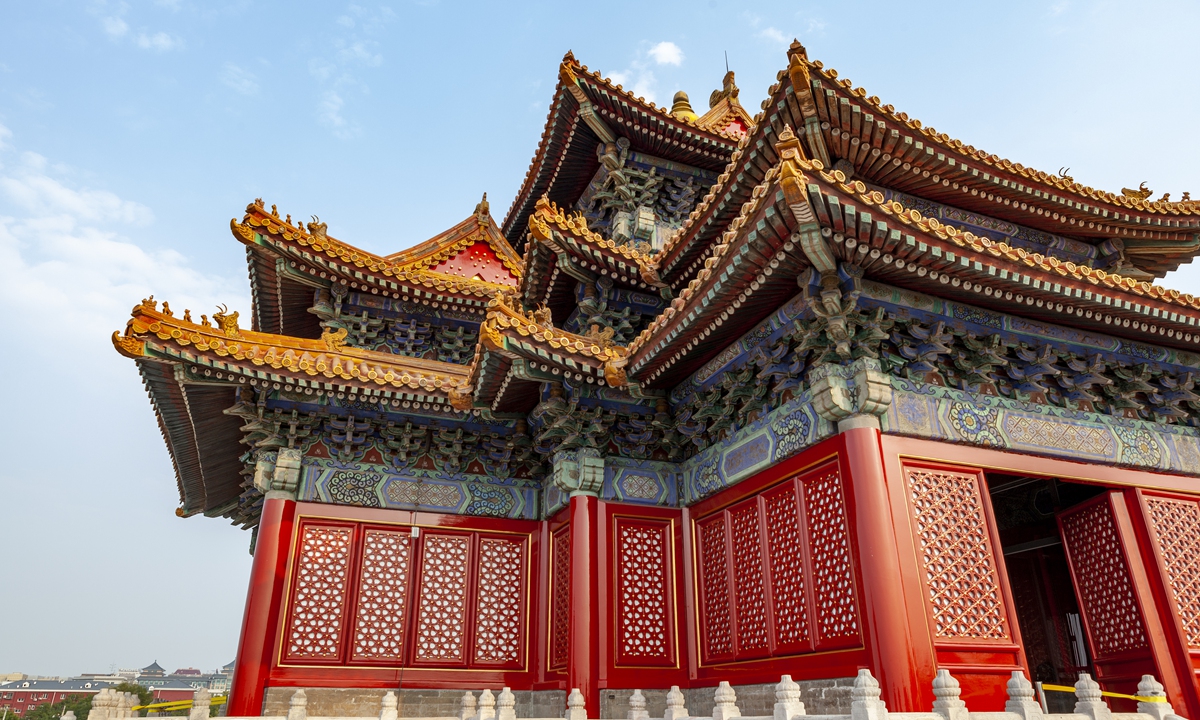
An ancient architecture with sun mao structure in the Palace Museum in Beijing Photo: VCG
Comprised of two structures, a projecting tenon and a corresponding mortise that have all been made from simulated lunar soil, the bricks of unique Chinese style "could be used for constructing lunar space" after their planned exposure tests in space, Zhou Cheng, a researcher leading the brick designing project, told the Global Times.
The brick's "tenon and mortise" structure that is also known as the structure of sun mao represents ancient Chinese architectural wisdom dating back to 5,000 BC. A typical sun mao structure requires no glue or nails. Whether it was unearthed at archaeological sites or is being modified for use at the lunar base, the wisdom of sun mao continues to the present day, and is also inspiring international designs.
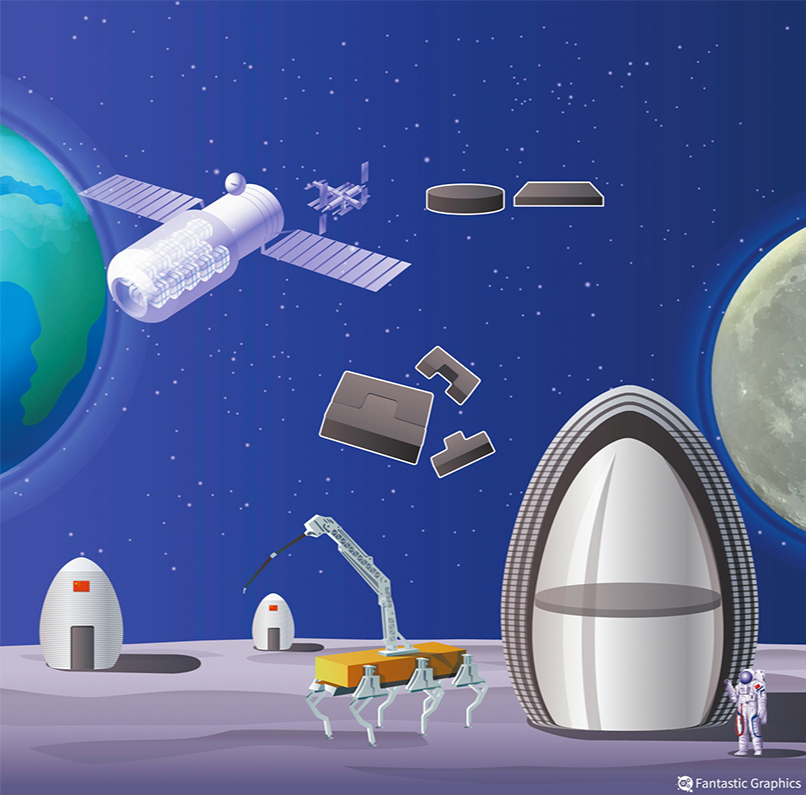
Photo: VCG
The secret of matching up
The building of a typical sun mao structure involves joining two components by matching up a projecting part, called a "tenon," with a corresponding recessed part, known as a "mortise." The "tenon and mortise" are respectively referred to as "sun" and "mao" in Chinese culture, and are commonly used for the construction of wooden buildings.
What would the construction of a lunar base, however, consist of? This question came earlier than China's brick design, to which Zhou told the Global Times that the "masonry and assembly structures" jointly, are a construction solution, that can be "minimally affected by sudden environmental factors such as moonquakes and solar winds." Zhou is also the deputy director of the National Center of Technology Innovation for Digital Construction.
Unlike a holistic structure, the assembly approach engages in matching up numerous small prefabricated modular units, for which the sun mao structure was used in making each of such units.
"A brick with such a structure has high crushing strength; every square centimeter of it can support the weight of 1,000 kilograms," Zhou emphasized.
The structural technique's durability has been tested for thousands of years, with its earliest known use dating back to the Hemudu ruins in East China's Zhejiang Province dating back to 5,000 BC.
Including the construction of the Palace Museum, the seamless craftsmanship has been applied to many ancient architectures, in which the Pagoda of Fogong Temple, also known as the Wooden Pagoda of the Ying county, Shanxi Province, is a stellar example.
As the world's tallest and oldest wooden pagoda, the temple's mortise and tenon joints have endowed it with remarkable strength "to absorb and dissipate vibrational energy during an earthquake," Xu Yitao, an ancient architectural expert, told the Global Times.
Although the design of sun mao has been valued by many countries such as Japan, its Chinese features remain prominent because it represents the ideal of "harmony" that is praised in traditional Chinese philosophy.
"A delicate balance and integration were achieved when a sun mao piece's concave and convex parts were matched up. The two parts were seemingly different but actually complemented each other, and this is the 'harmony' we uphold in Chinese culture," said Wang Zhenhua, an inheritor of the sun mao technique that is also the country's intangible cultural heritage treasure.
'More than a design'
Due to its virtue of providing stability while also being flexible and easy to assemble, this particular construction mechanism is now seen in modern projects, safeguarding the culture therein.
Serving to protect the local minority culture through modern methods, architect Chen Guodong has adopted sun mao structures to construct timber buildings for people in Qiandongnan Miao and Dong Autonomous Prefecture, Southwest China's Guizhou Province.
The designer told the Global Times that such sun mao joints have been used to construct homes that are both "traditional and stylish." These timber structures, built without a single iron nail, are remarkably sturdy. The new houses must be able to withstand mountain winds and dense fog, while also showcasing the elegance of traditional craftsmanship.
"Not only do the local craftsmen possess great craftsmanship, but they also serve as outstanding representatives of Dong ethnic culture," Chen told the Global Times. In 2006, the Dong people's timber construction techniques were included in China's National Intangible Cultural Heritage list.
"The structure's value lies in the fact that it is applicable to different scenarios, and to connect not only building's parts, but also the world to sustainable Chinese craftsmanship," Fang Yi, an architectural expert who specializes in building such structures, told the Global Times.
"Sustainable craftsmanship" is becoming popular not only to domestic designers, but has also debuted on international stages.
Taking inspiration from the sun mao technique, a student group at Donghua University presented their paper garment designs at the 47th WorldSkills Competition in Lyon, France.
Through multiple experiments with materials such as the DuPont paper and optical fiber light strips, a single paper garment is formed with around 700 individual sun mao components.
"Our designs are not just clothing, but the crystallization of our love for traditional Chinese culture and our pursuit of the scientific and technological innovation spirit," said Yang Chen, a student who was part of the design project.
